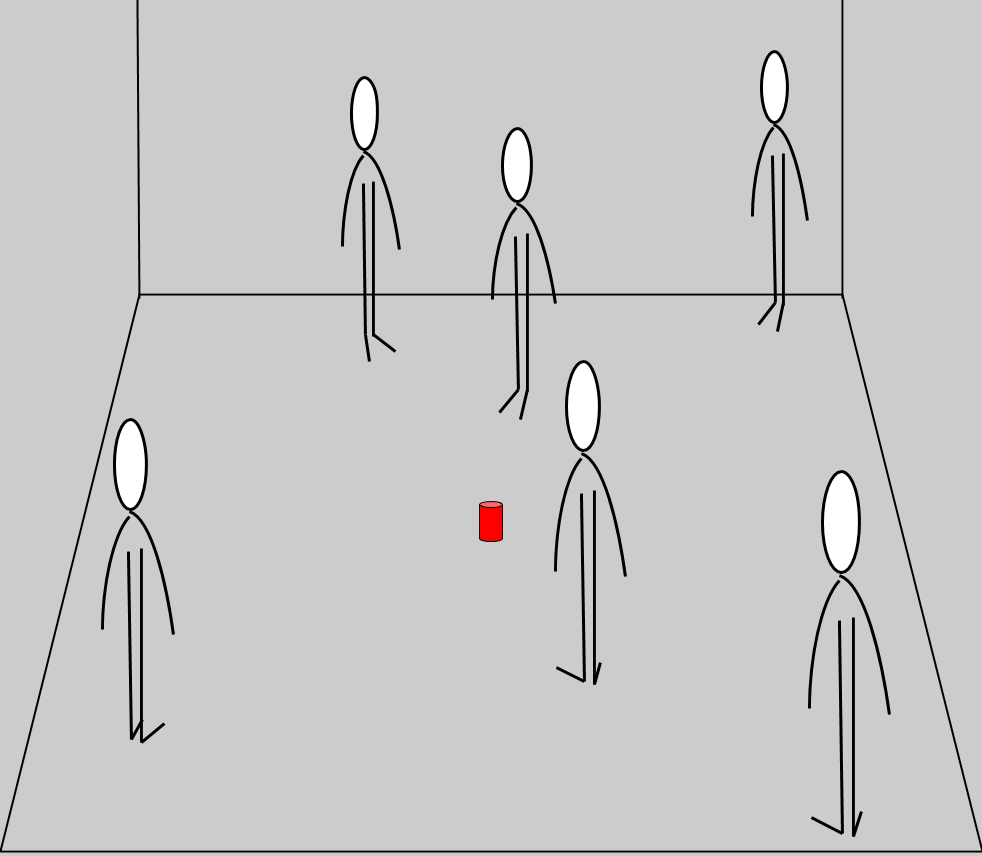During the forming stage, team members will often work as individuals and be very task focused. To move beyond this stage, they will need to start to form interpersonal relationships and start to work together. A good way to seed this is with some team building, here are some suggested activities:
- Journey lines: With an A3 sheet of paper and some pens, each team member draws their journey from the point they think is most relevant (when they were born/left school/left university) to the point that they arrived in this room. Timebox the drawing for 15 minutes, and then ask each team member to present their journey line one-by-one. Allow each team member 5 minutes to present and 2 minutes for questions.
- Highs or lows: Each participant shares something that was a high and something that was a low, either in their career or their life in general (this will depend on your organization and how comfortable individuals are with sharing personal information).
- "I can tell you about...": Take it in turns to go around each team member, when it's their turn, ask them to list subjects they can tell the team about by starting with the phrase "I can tell you about..." For instance, "I can tell you about football, I can tell you about Funko Pops, I can tell you about my little baby boy," and so on. When a team member, any team member, hears a subject they want to hear about, they say, "Stop, tell me about..." For example, I'd be interested to hear about Funko Pops, so I'd say, "Stop, tell me about Funko Pops." Timebox the telling for 2 minutes. Then move to the next team member.
- Improvisation games: I once heard two improvisation comedians talking on a local radio show about how they worked on stage. They said the number one rule in improvisational comedy was the Yes and rule. For example, when one comedian leads by saying something like "I'm a Tyrannosaurus Rex, hear me roar!" the other might say, "Yes and... I'm a paleontologist who's time traveling so I can record that roar." The "Yes and..." rule is simple and means two key things take place; the first is we need to listen (active listening); the second is the dialogue is always built upon, nothing is ever taken away. This creates a supportive approach for you and your fellow comedians from which you can hopefully create great comedy. This translates to our team environment because so much of the work we do has degrees of ambiguity and requires a range of perspectives from our team to get a good outcome. Improvisation techniques are important during the periods of negotiation between team members and helps us create a win-win situation; teams will create kickass solutions and team members will feel heard, understood, and more cohesive as a team. Management 3.0 offers a game that will help us learn to improvise: https://management30.com/product/improv-cards/.
- The marshmallow challenge: Each team has 18 minutes to build the tallest free-standing structure they can with just 20 sticks of spaghetti, one yard/meter of tape, one yard/meter of string, and one marshmallow. The crunch is that the marshmallow needs to be on the top. This is best done with multiple teams for a little bit of spirited competition. For more information, follow this link: https://www.tomwujec.com/design-projects/marshmallow-challenge/.
- Online video games: Games such as Keep Talking and Nobody Explodes is a fun team building game, where a team member has to defuse a ticking virtual bomb while teammates give them clues on how to defuse it. The game is available on Valve Corporation's Steam platform.
Moving constellations is one icebreaker for team building that allows our team to understand each other's opinions on a range of subjects. So let's start:
Activity: Moving constellations
What you will need: An open/cleared space. An object that you can put in the center of the room (such as a Frisbee, a soft drink can, or a hacky sack):
- Show the object to the team and place it in the center of the room.
- Ask our team to stand scattered around it.
- Explain to them that you will be reading some statements. Once the statement has been read, they then move closer to or further away from the item in the center of the room relative to how true the statement is for them. For example, if they very much agree with the statement they move to stand close to the object in the center. If they very much disagree, they move to the outside of the circle. If they're somewhere in the middle, they stand neither at the outside or close to the object in the center, but somewhere in between.
- Once the statement has been read, and everyone has moved, have our team look around and see where their teammates are.
- When everyone has had the opportunity to look around, read the next statement.
- The final stage, once everyone is comfortable with the exercise, is to have our team sit down and write statements that they would like to gather the team's feelings on. Timebox the statement writing; 3-5 minutes should be plenty. Gather up the statements from the team and continue with the exercise.
The following diagram shows our team's response to one of the statements:

Two of the teammates are standing relatively close to the can in the center and obviously agree with the statement. Three are standing in the corners of the room; they don't agree with the statement. One is standing somewhere in between and is more neutral.
As an addition to the preceding set of rules, after we've read a statement and our team has moved to their new positions, we could ask them to tell us why they chose that particular location. This will add clarity to the conversation if it's needed.
